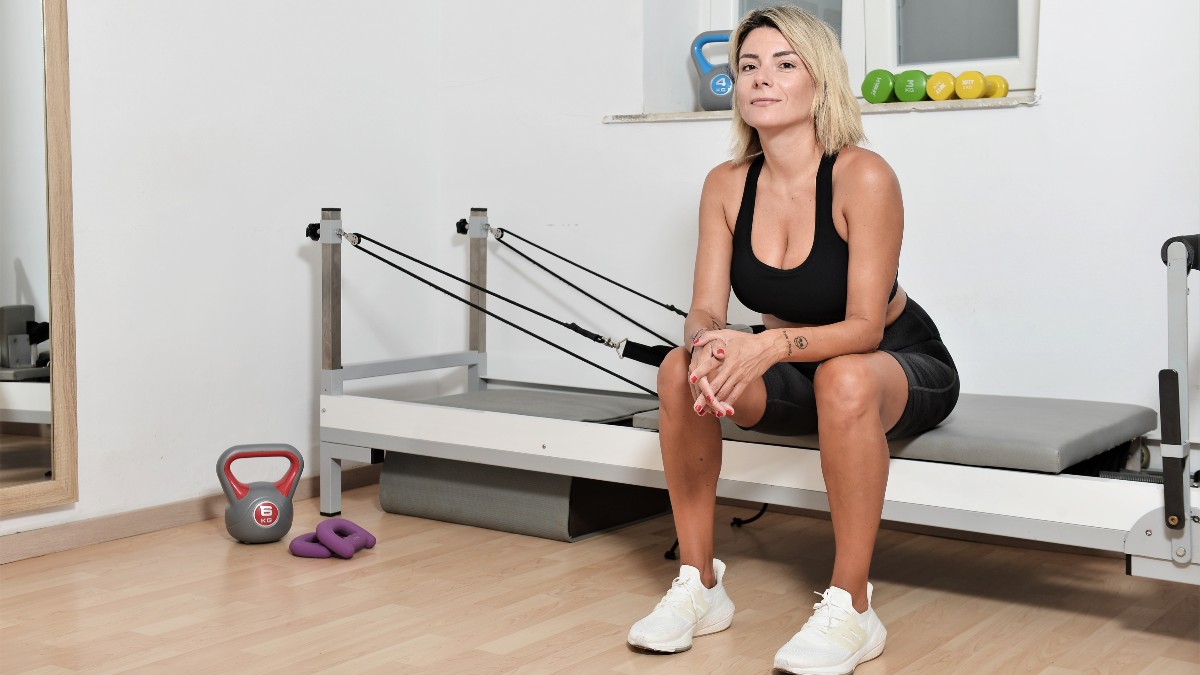[ad_1]
*Written by Sophia Perdikispersonal trainer, certified Pilates Instructor, with experience in training practitioners with neuromotor problems, graduate of TEFAA Aristotle University of Thessaloniki and AF Studies School
If you look around, most people tend to involuntarily slouch when standing or walking. This is one of its main features sedentary lifestyle, as well as the lack of regular physical activity. Long term, maintaining proper posture can help reduce injuries and discomfort associated with poor posture. The good news is that, with the right exercise, we can steadily, progressively and effectively improve our posture.
But let’s see what bad posture can cause, not only in the body itself, but also in its functions, such as digestion, but also sleep.
The curves of the spine
The three main curves of a properly aligned spine form one “S” shape. Over time, incorrect posture can cause these natural curves to change shape, exerting too much pressure in the wrong places. The spine is built to absorb shock, but poor posture can gradually impair this natural ability, putting the body at risk of more serious injuries in the future.
The core muscleswhich connect the upper and lower body, is the key to maintaining balance. When this area is weak, the upper body is more likely to lean forward (hunch over). As a result, the shoulders hunch and the balance required for good posture is lost. Strong leg muscles make it easier to stand and maintain balance, while weaker upper back muscles lead to an unwanted body lean.
Pain on the back
One of the common “side effects” of poor posture is upper and lower back strain. Particularly, leaning forward puts pressure between the shoulder blades. If you notice pain at the base of your neck and around your tailbone after a long day at the office, it’s likely that you’ve been sitting for long hours in the wrong position.
A strong core (trunk) affects how well you move and can help prevent back injuries. Good posture makes it easier for you to get up from a chair, carry objects, climb stairs and bend over.
If your core is weak, the rest of your body has to compensate. This not only affects the core, but can cause pain in other muscles of the body, which are necessarily strained.
Poor sleep quality
Long-term bad posture puts the entire muscular system in a compromised position and can disturb the quality and duration of sleep. In practical terms, this means you can’t fully relax your body during the night, you’re constantly twisting to find a comfortable position for your neck and back, and you wake up tight.
Charges and poor performance
When you are not sitting properly and your shoulders are hunched, it also has a negative impact on your work performance as you focus on how uncomfortable you are and not on your work. Poor posture has also been shown to be associated with low self-esteem.
In addition, the wrong attitude puts a strain on muscles and bones, resulting in signals from the sciatic nerve not flowing unhindered. Over time, this condition can lead to sciatica, characterized by pain in the back of the thigh, calves and feet.
The muscles of the waist are also burdened. Over the long term, a weak core affects the stabilization and mobility of the hip, which limits range of motion and can lead to a condition called overlordship.
Yet, the constant engagement with a screen it puts a lot of pressure on the spine, shoulders and neck.
Disturbed digestion
If you do office work, then the wrong posture can lead to digestive problems. This is because the organs are compressed, which can slow digestion, cause stomach problems and affect the digestive system.
Along with muscles and nerves, poor posture also affects the circulation of fluids in the body, including blood. In the long term, poor circulation affects the vascular system in various ways and can lead to high blood pressure and cholesterol, varicose veins or deep vein thrombosis.
Ways to improve posture
There are many ways to improve poor posture and correct the problems it causes. The interventions we recommend will reduce discomfort and strengthen weak muscles. Once the muscles are strengthened, we can also focus on improving the range of motion.
THE excercise helps strengthen the core and upper and lower back muscles. In this way, you develop the strength to keep your body in balance and avoid trunk tilt.
The best exercise is the one you feel comfortable doing on a regular basis. The options are many: different yoga poses, pilates mat or reformer, stretches and other exercises designed to stretch and lengthen the spine.

The text was published in issue n.10 of the magazine ygeiamou which was released with THE THEME on Saturday 28/10
